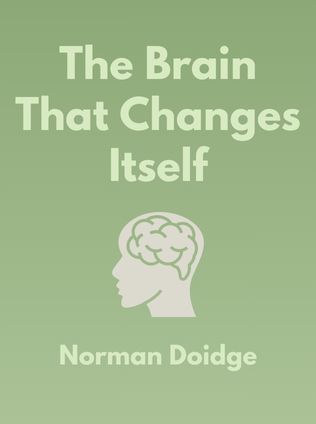
The Brain That Changes Itself
Stories of Personal Triumph from the Frontiers of Brain Science
By Norman Doidge
Published 03/2007
About the Author
Norman Doidge, M.D., is a psychiatrist, psychoanalyst, and researcher affiliated with both the University of Toronto and Columbia University. He has gained international acclaim for his pioneering work in neuroplasticity—the brain's capacity to change its structure and function in response to experience. Doidge’s books, The Brain That Changes Itself and The Brain’s Way of Healing, have been translated into numerous languages and have become global bestsellers. Through his accessible and engaging writing, Doidge has brought the complex science of the brain to a wider audience, demonstrating the profound implications of neuroplasticity for healing and human potential.
Main Idea
In The Brain That Changes Itself, Norman Doidge explores the groundbreaking concept of neuroplasticity, which posits that the brain is not a static, unchangeable organ but a dynamic entity capable of reorganization and growth throughout life. This concept challenges the long-held belief that the brain’s structure is fixed after early development. Doidge illustrates through compelling case studies and scientific explanations how neuroplasticity can be harnessed to treat a variety of neurological and psychological conditions, including stroke, brain injury, learning disabilities, and chronic pain. The book is a powerful testament to the brain’s resilience and capacity for healing, offering hope to those facing conditions previously thought to be untreatable.
Table of Contents
- Introduction: The Brain as a Dynamic Organ
- The Concept of Neuroplasticity
- The Evolution of Brain Science
- Applications of Neuroplasticity in Healing
- Rewiring the Brain: Case Studies
- The Dark Side of Neuroplasticity
- Conclusion: The Future of Brain Science
The Concept of Neuroplasticity
Neuroplasticity is the central theme of The Brain That Changes Itself. Doidge defines neuroplasticity as the brain’s ability to change its structure and function in response to experience, learning, and environmental stimuli. This revolutionary concept challenges the traditional view that the brain is a fixed, hardwired organ that loses its capacity for change after childhood. Instead, neuroplasticity reveals that the brain is constantly evolving, capable of forming new neural connections and reorganizing itself to adapt to new challenges, recover from injuries, and learn new skills.
"The brain is not a machine that wears out, but rather a living organ that can adapt and grow throughout life." — Norman Doidge
Doidge explains that neuroplasticity is driven by the activity of neurons—nerve cells that transmit information throughout the brain. When we engage in new activities or learn new information, certain neural pathways are activated repeatedly, leading to the strengthening of these pathways. Conversely, pathways that are not used frequently may weaken or disappear altogether. This dynamic process allows the brain to adapt to new challenges, learn new skills, and recover from injuries.
The implications of neuroplasticity are profound. It suggests that the brain is far more adaptable and capable of healing than previously thought. This has opened up new avenues for treating neurological conditions that were once considered incurable, such as stroke, traumatic brain injury, and degenerative diseases. Through targeted exercises and therapies, patients can harness the power of neuroplasticity to regain lost functions and improve their quality of life.
Sign up for FREE and get access to 1,400+ books summaries.
You May Also Like
The Subtle Art of Not Giving a F*ck
A Counterintuitive Approach to Living a Good Life
By Mark MansonHow To Win Friends and Influence People
The All-Time Classic Manual Of People Skills
By Dale CarnegieFreakonomics
A Rogue Economist Explores the Hidden Side of Everything
By Steven D. Levitt and Stephen J. DubnerQuiet: The Power of Introverts
The Power of Introverts in a World That Can't Stop Talking
By Susan Cain



















